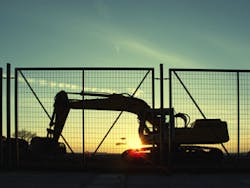Since 1993, the equipment rental industry has more than doubled in size—from $11.2 billion to $22 billion. Just 10 years before that, equipment rental was a $1.1-billion industry.
Industry experts say that a combination of factors is responsible for this sizable boost, most notably the construction booms of the late 1980s and mid-1990s. According to Fred Snow, president of Brandolini Company in West Chester, PA, the economic boom of the ’90s increased construction projects and, consequently, the demand for equipment. Since equipment is expensive to buy, contractors turn to rentals to meet project needs. “During a boom economy you’ll get a lot of landscapers and other small contractors who decide to get into the development business. That might account for the jump in equipment rentals. Also, bigger companies that own equipment will still rent for other jobs rather than move equipment from site to site.” Snow also points out that there is a lot of equipment from the last boom in the mid- to late ’80s that has aged. “It can be cost-prohibitive to replace this equipment so companies turn to renting as an option.”
According to Mike Whelan, general manager of J.S. Cole Company in Newark, CA, the rule of thumb is that rental costs are 3-4% per month of the total purchase price of the machine. In the San Diego, CA, area, for example, a midsize excavator can be rented at Hawthorne Rent It Service for $475 per day, plus $300 for delivery and pickup (within a 20-mi. radius) and another 10% for insurance (unless the company has a certificate of insurance on file at the rental store). The longer the rental, the cheaper the per-day rate. At this rental store, the weekly rate is four times the daily rate. The monthly rate is three times the weekly rate, and so on. Hawthorne Rent It Service will also arrange for rental equipment to be moved from one job site to another. Depending on distance, this generally costs about $100.
With rental companies providing transport, pickup, and routine maintenance services, rental becomes the most hassle-free, most economical, and even safest option in many situations. Also, more and better equipment is readily available at local outlets in many markets. Same-day rental of heavy, light, and allied equipment and specialized tools is now possible.
J.S. Cole Company has 225 major pieces of Caterpillar equipment: large scrapers, wheel loaders, compactors, and excavators. It serves a niche market of mid- to large-size contractors that have a need for more equipment than they own for a short time-generally one week to six months.
“Our customers come to us because we have low-hour-rate equipment that is highly productive for them. They might own some equipment themselves, but the next job could break the camel’s back. Rather than risk it, they’d prefer to have high availability,” explains Whelan. He adds that his company will send a quality-control specialist for minor repair work. Customers are typically responsible for routine maintenance, such as greasing and oil changes; in some cases the dealer may provide this service. The dealer will respond to major repair jobs. Customers, however, are required to obtain insurance to cover the costs of damage from equipment abuse.
Whelan also notes that J.S. Cole’s rental equipment puts on about 1,000 hours per year. “Although the useful life of most equipment is 10,000 hours or 10 years, we delete equipment from our fleet after 6,000 to 7,000 hours.” This equipment, he says, is traded in to the dealer. When equipment is nearing the end of its useful life, the rental company may offer to convert it to a rent-to-own. In this case, when the subsequent rental payments equal the sales price, the customer takes ownership.








